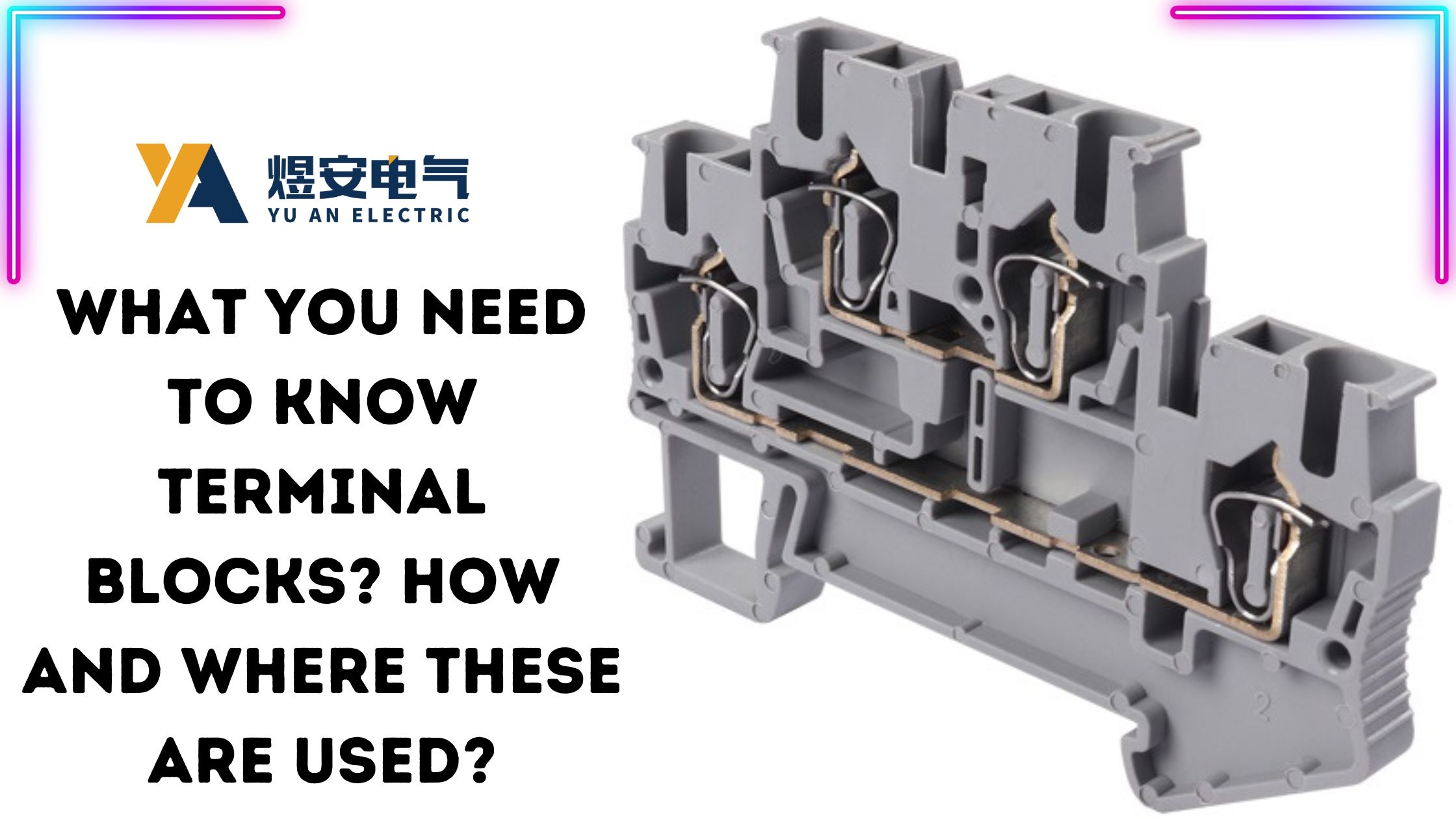
What are Terminal Blocks?
Terminal Blocks are modular, insulated blocks used to join or terminate electric wires. They provide a much more flexible solution for connecting wires. Terminal blocks find applications in manufacturing, automation, and power distribution industries. These blocks can be classified based on structure, device type, and termination options. The selection of terminal blocks depends mainly on their application.
They make wiring modification easy as wires can easily be removed or added. Terminal blocks also provide a neat and orderly way to connect wires.
Terminal Block Connection Methods
The methods used to connect the wires inside the terminal block mainly include:
1. Push-in Terminal Blocks
Push-in spring terminal blocks are increasingly becoming popular. With user-friendly design and time-saving features, push-in spring terminal blocks have changed the way we approach electrical connections. They are an innovation in the field of electrical connectors providing efficient and reliable wiring solutions.
2. DIN Rail Terminal Blocks
Made from insulating materials or plastic, DIN rail terminal blocks provide a safe interface between different components. They are ideal for control panel wiring and industrial power distribution applications. They play an important role in the installation, operation, and maintenance of electrical equipment.
3. Spring Cage Terminal Blocks
This is another common method of wire connection that requires the wire to be attached to a ferrule before it is inserted. A spring-release device is used to attach and release the wire.
4. Screw-in Terminal Blocks
Screw-in terminal blocks use screws for holding the wires. It is the most commonly used connection method. However, it is important to be careful while tightening the screws. Over-tightening the screws can result in poor and dangerous connections.
5. Pluggable Terminal Blocks
A pluggable terminal block is used to connect wires in an electrical system. They are used in applications that require a modular solution to facilitate the installation. They can be easily assembled without the need for additional tools. The pluggable terminal blocks provide a reliable and convenient solution for electrical installation, maintenance, and troubleshooting.
Key Electrical Specifications
Here are some of the key electrical specifications that are important to consider during the design phase.
1. Current Rating: Operating a terminal block at too high a current can result in overheating and damage. This makes current rating the most important specification in terminal block designs. The current rating depends on the cross-sectional area, the conductivity of the terminals, and the corresponding temperature rise. The module should carry a current rating of at least 150% of the anticipated maximum current on the system.
2. Voltage Rating: The voltage rating of a terminal block is influenced by the dielectric strength and pitch of the housing. The voltage rating must be greater than the maximum system voltage. This helps protect the system from potential voltage surges.
3. Poles: This number specifies the number of individual circuits housed by the terminal block. The pole number can range from 1 to 24 poles depending on the application.
4. Pitch: Pitch is determined by the overall rating of the terminal block which takes into account factors such as voltage/current, creepage, and clearance.
Conclusion:
These are some of the things to know about terminal blocks that can keep you better equipped for selection.
At YU AN Electric, we’re a leading supplier of high-quality terminal blocks and connectors in the global market. We are dedicated to providing the most advanced equipment, such push in spring terminal blocks that meet the highest standards.
